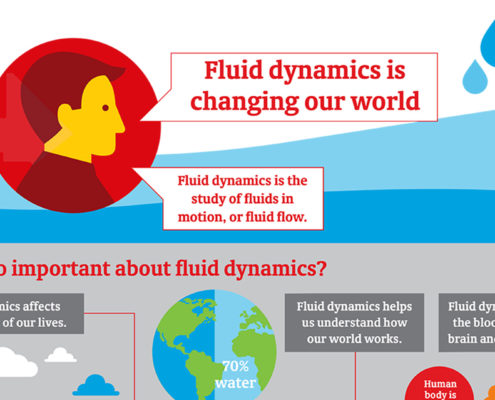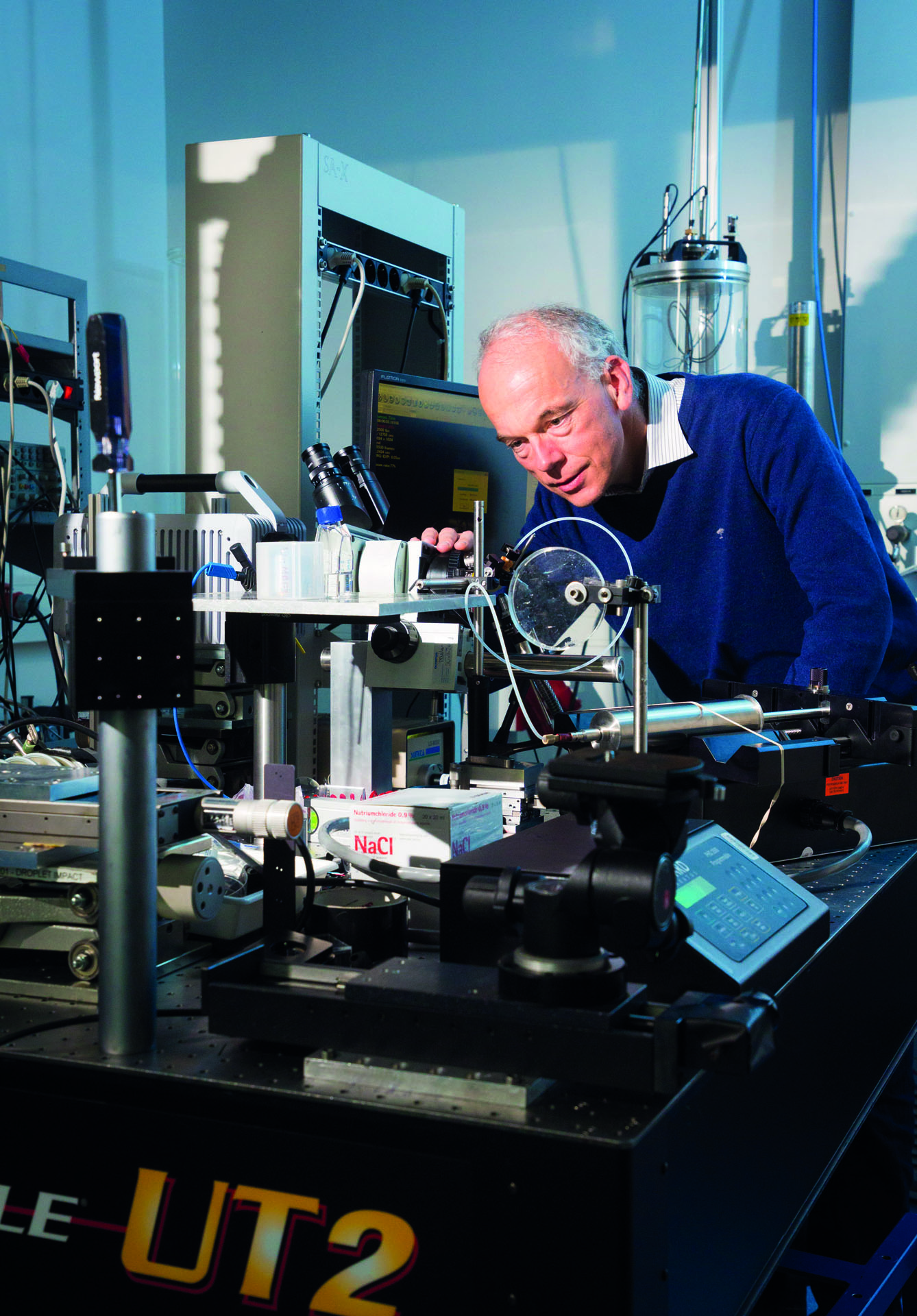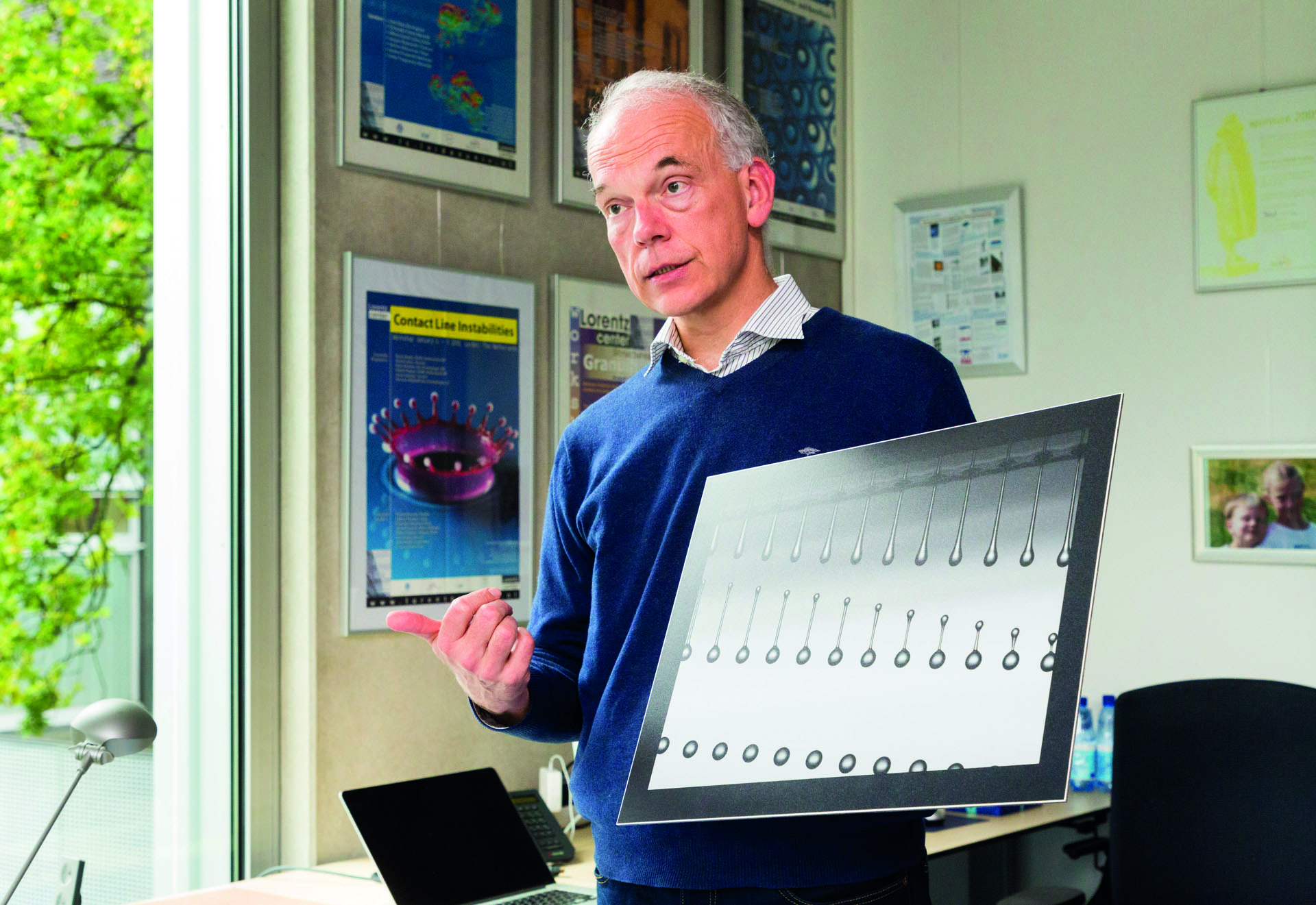The golden age
However, Lohse emphasizes that this is only one of many big questions in his field. “Fluid dynamics is very rich in relevant problems. It’s not like high-energy physics, where at one point everybody was hunting for the Higgs boson1. There’s no grand, central mystery in fluid dynamics. Instead, we have a continuous stream of specific questions and phenomena, each with their own specific challenges.”
And if fluid dynamics is rich in questions, it is currently also remarkably rich in answers. “It’s no exaggeration to say that this is the golden age of fluid dynamics”, says Lohse. “In the last two decades our field has made enormous progress, and we are on the brink of exploring whole new questions that as a PhD student I didn’t dream we’d ever be able to tackle.”
This “golden age” was made possible by two key technological innovations, the first being the rapid development of digital high-speed cameras. Lohse was among the first to spot the crucial potential of this technology. “My background is in statistical physics, so I reasoned: the more data I have, the better.”
 https://cpp.canon/app/uploads/2018/05/Infographic-Fluid-Dynamics.jpg
1080
1920
Michel van der Wal
Michel van der Wal2018-07-23 10:40:582019-02-18 13:31:53Infographic: fluid dynamics is changing our world
https://cpp.canon/app/uploads/2018/05/Infographic-Fluid-Dynamics.jpg
1080
1920
Michel van der Wal
Michel van der Wal2018-07-23 10:40:582019-02-18 13:31:53Infographic: fluid dynamics is changing our world











